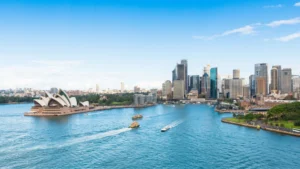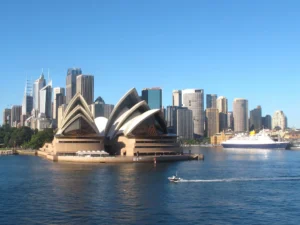Canada PR Visa — Clear Steps, Real Timelines, and How to Improve Your Chances
1 — What is a “Canada PR Visa” ?
When people say Canada PR Visa they usually mean one of two things: (a) the decision granting permanent residence or (b) the travel documents that let you land in Canada and obtain PR status. The process is handled by Immigration, Refugees and Citizenship Canada (IRCC) and includes several pathways and rules — not a single one-size process. For official guidance and to check application status and portals, IRCC is the source of truth.
2 — Main immigration pathways to PR in Canada
Here are the common routes to a Canada PR Visa:
- Express Entry (economic skilled streams): Federal Skilled Worker, Skilled Trades, and Canadian Experience Class. This is points-based and fast for higher-scoring candidates.
- Provincial Nominee Programs (PNPs): Provinces nominate candidates to meet local labor needs; some PNP streams link to Express Entry for faster processing.
- Family sponsorship: Spouse, partner, dependent children, and certain parents/grandparents streams.
- Other routes: Caregivers, start-up visas, and regional programs (e.g., Atlantic Immigration).
Choosing the right stream early saves wasted fees and time.
3 — Processing times and why they vary (official note)
IRCC publishes processing times and explains how they’re calculated: times are based on the inventory and past processing of similar applications, and they start only when a complete application is received. Processing can vary widely by stream and by whether additional information or biometrics are requested. Always check IRCC’s processing-time tool for the current estimate for the specific PR category you’re using.
4 — Practical step-by-step: from assessment to landing
This is the pragmatic roadmap I use with clients.
- Initial eligibility assessment (1–2 weeks). Collect CV, education, language scores, and a quick work history to suggest the best pathway.
Documentation prep (2–8 weeks). ECA (Educational Credential Assessment), language tests (IELTS/CELPIP), police certificates, employment letters, and medical checks. Missing or weak documents cause most delays. - Profile creation / Expression of Interest. For Express Entry you submit a profile and enter the CRS pool; for PNP you may apply to the province first.
- Receive an Invitation to Apply (ITA) or nomination. ITAs are time-limited (usually 60 days). Fill the PR application completely and upload every supporting document.
- Biometrics & processing. After submission you’ll provide biometrics (if required), and IRCC processes your file. Monitor the PR portal for messages.
- Decision and pre-landing steps. If approved, you’ll receive instructions to finalize your landing (PR card, travel documents). Plan settlement logistics early.
5 — Common mistakes that cause refusals
- Incomplete or inconsistent employment letters: have referees use official letterhead and include exact duties, hours, and dates.
- Poorly translated or uncertified documents. Use accredited translators.
- Wrong pathway selection: the “shiny” stream is not always the best match.
- Late or missing responses to IRCC requests. These can result in refusals or bounced files.
6 — Costs, documents, and timelines — realistic expectations
- Government fees are fixed (IRCC publishes them). Professional fees vary: document-only help, full-service representation, or post-landing support.
- Processing time examples: Express Entry PR applications (after ITA) aim for a six-month processing target for complete files, but time to ITA depends on CRS and draws; PNP and non-Express streams can take much longer. Check IRCC for live metrics.
7 — Helpful enhancements: checklists and templates you can use today
- Quick eligibility checklist (one page): education, language, work years, age, adaptability.
- Employment letter template meeting IRCC detail requirements.
- Document tracker (spreadsheet): file name, date, translator (if any), upload status.
- Pre-landing checklist: SIN, health coverage, banking, housing steps.
8 — Author & review box
Author: Senior Immigration Advisor with 10 years’ experience helping candidates immigrate to Canada via Express Entry, PNP and family routes.
Reviewed by: Phoenix Global Resettlement Services quality team.
Company: Phoenix Global Resettlement Services
Location: No.487 JT Plaza, Jyothi Nivas College Road, Opposite Krishna Temple, 5th Block, Koramangala, Bengaluru, Karnataka 560095.
9 — Frequently Asked Questions (FAQ)
Q1 — How long does a Canada PR Visa take?
It depends on pathway and file completeness. Express Entry aims for six months after ITA for complete files; other streams vary. Always check IRCC’s processing tool for the latest estimate.
Q2 — Can I apply without a consultant?
Yes. Many applicants succeed independently. A consultant helps when files are complex or when you want to reduce avoidable mistakes.
Q3 — Is Express Entry always the fastest route?
It can be fast for high CRS scorers, but a PNP nomination or strategic pathway may be more certain for many applicants.
Q4 — How do I verify an immigration consultant?
For Canadian representation, verify that the advisor is licensed (RCIC) via the College of Immigration and Citizenship Consultants public register. Using an unlicensed representative risks your case.
Q5 — What’s the first practical step?
Get a comprehensive eligibility assessment — it should map realistic pathways, required documents, and an estimated timeline.
.




